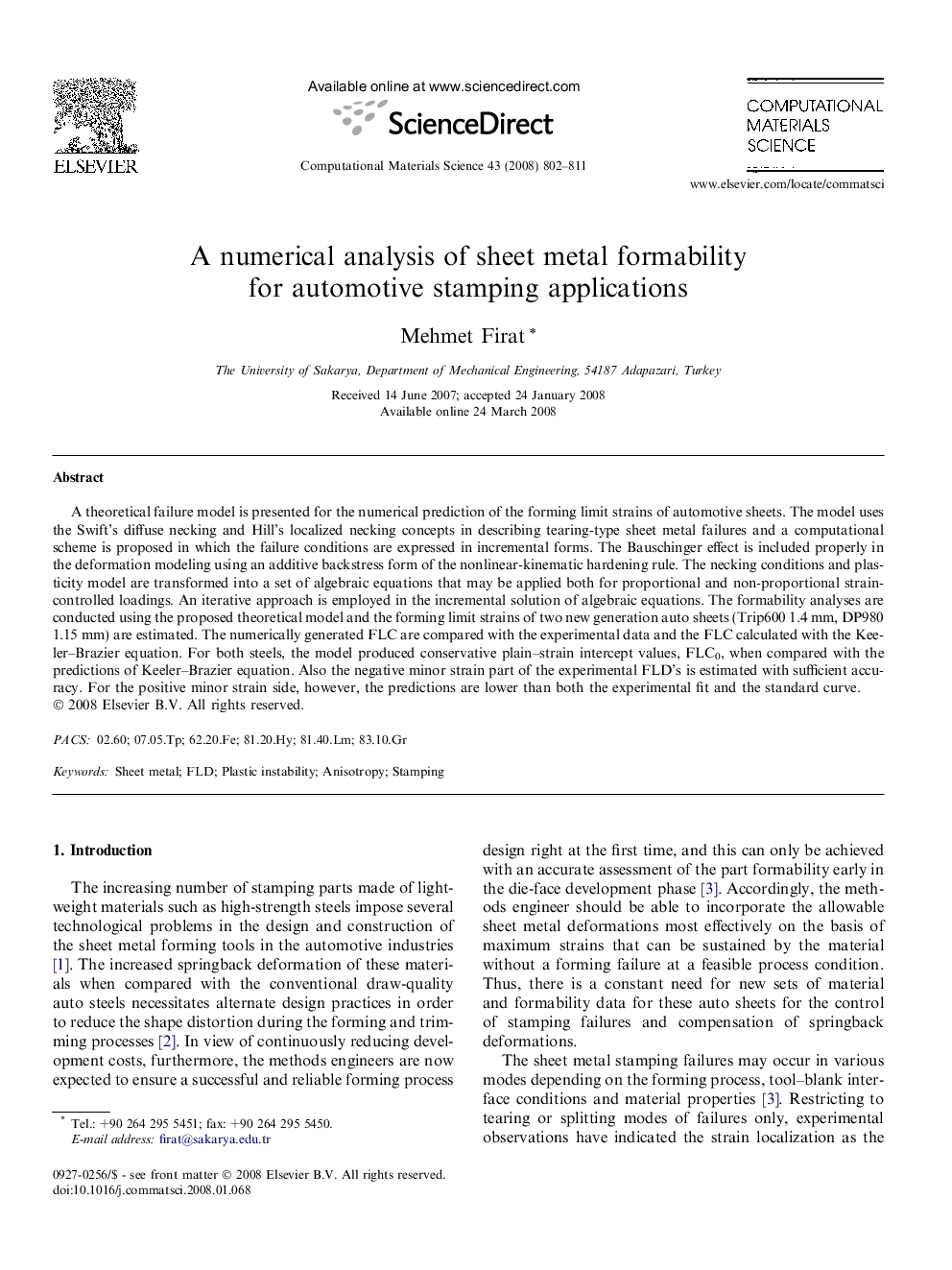| Article ID | Journal | Published Year | Pages | File Type |
|---|---|---|---|---|
| 1563293 | Computational Materials Science | 2008 | 10 Pages |
A theoretical failure model is presented for the numerical prediction of the forming limit strains of automotive sheets. The model uses the Swift’s diffuse necking and Hill’s localized necking concepts in describing tearing-type sheet metal failures and a computational scheme is proposed in which the failure conditions are expressed in incremental forms. The Bauschinger effect is included properly in the deformation modeling using an additive backstress form of the nonlinear-kinematic hardening rule. The necking conditions and plasticity model are transformed into a set of algebraic equations that may be applied both for proportional and non-proportional strain-controlled loadings. An iterative approach is employed in the incremental solution of algebraic equations. The formability analyses are conducted using the proposed theoretical model and the forming limit strains of two new generation auto sheets (Trip600 1.4 mm, DP980 1.15 mm) are estimated. The numerically generated FLC are compared with the experimental data and the FLC calculated with the Keeler–Brazier equation. For both steels, the model produced conservative plain–strain intercept values, FLC0, when compared with the predictions of Keeler–Brazier equation. Also the negative minor strain part of the experimental FLD’s is estimated with sufficient accuracy. For the positive minor strain side, however, the predictions are lower than both the experimental fit and the standard curve.
